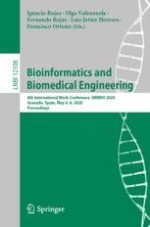2020 | OriginalPaper | Chapter
Bayesian Optimization Improves Tissue-Specific Prediction of Active Regulatory Regions with Deep Neural Networks
Authors : Luca Cappelletti, Alessandro Petrini, Jessica Gliozzo, Elena Casiraghi, Max Schubach, Martin Kircher, Giorgio Valentini
Published in: Bioinformatics and Biomedical Engineering
Publisher: Springer International Publishing
Activate our intelligent search to find suitable subject content or patents.
Select sections of text to find matching patents with Artificial Intelligence. powered by
Select sections of text to find additional relevant content using AI-assisted search. powered by
